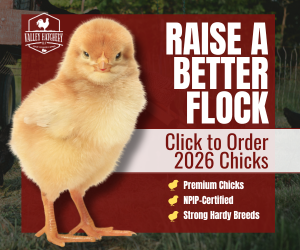Hello there all!
I have gotten to thinking. This will be my first winter raising chickens. I had ducks last winter (but that is a whole different story) but I think chickens will be a tad bit different from ducks. So, lets begin by sharing all of our tips and DIY tricks for keeping things thawed and other such things. As winter progresses, we will share stories of how our tips and tricks are working, maybe need to find different ideas if some are not working, and share pictures of chickens enjoying the snow! Here are some topics I would love to see some ideas on:
1. Keeping those waterers thawed, because we all know how hard it will be to get ice chunks out of them.
Sprout some Plotspike Forage Oats. ( http://www.plotspike.com ) for them in mason jars in your house. Feed them sprouts 4-7 days old as "green feed". 1 cubic inch per bird per day as a supplement to their normal ration. This "green feed" helps bring the hens into lay and helps the males produce more robust sperm. I get my bags at Tractor Supply or probably any hunting/fishing store. These forage oats are used to plant feeding plots for deer hunters. They are non-GMO and specially created at Louisiana State University circa 2002. No added advantage in feeding sprouts older than 7 days. Younger than 4 days, are fed as "grain feed", as a substitute for part of daily ration but do not give the green feed virtues of 1-3 days old ...because on the 4th day, a nutritional change takes place in the oat sprout which gives "green feed" virtues to the sprouts. Older than 7 days, one runs the risk of the sprouts spoiling. Sprouts should always smell fresh, not sour (spoiled). Feel "crisp" to the touch not slimy(spoiled)
4. Preventing frostbite.
Vaseline on combs and wattles. Change your coop to a Woods Open Air Coop. Get a breed with smaller comb and wattles. Proper Ventilation.
5. When it might be necessary to bring in extra means of heat.
Use a Sweeter Heater. http://www.sweeterheater.com Take out the roosts and pile extra deep kiln-dried shavings on the floor for them to snuggle down into. Use kiln-dried hardwood shavings The white bale at Tractor Supply, not the yellow bale. Keep checking all winter to add more deep chips as the birds press them down. You can add more Sweet PDZ under the chips when you add more chips but no need for more DE.
6. Things for them to do since they won't have worms to search for, the ground will be too frozen for dust baths.
Hopefully stress won't be a problem if they have 4 sq. ft. per bird if they need cooped inside for extensive periods. (1/2 that sq. ft. for bantams). The hanging cabbage is a good idea.
1. Sprinkle an even layer of food grade diatomaceous earth on the bottom of the cleaned coop. make it just thick enough so yo can't see the grain in the wood floor. Pile a bit extra in corners and along edges where the walls meet the floor. Use a simple face mask or bandana over your face when spreading DE.
3. Gently spread 4 to 6 inches of white bale Tractor Supply wood shavings over the coop floor. Being careful not to disturb the under layers of DE and PDZ too much because you want a nice even layer of DE and PDZ under the chips. (use a simple face mask or bandana over your face until the DE is covered with chips.
Karen in western PA, USA
Let's have fun with our chickens this winter!
ALL BYC RULES APPLY.




